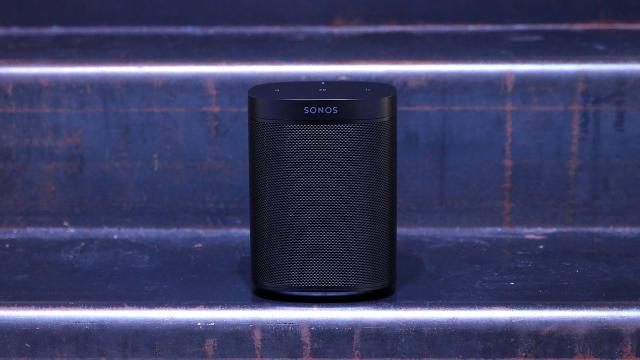The Sonos saga continues. A few months ago, the company caught some flack for sundowning its older hardware—now dubbed “legacy” products. It then quickly amended that while its oldest products would no longer receive newer features, they would still receive security updates and bug fixes. A big unanswered question, however, was how exactly would newer and legacy Sonos products interact?
Well, it would appear the answer is a new app and OS, which Sonos is calling Sonos S2. In a phone briefing, a Sonos spokesperson told Gizmodo that all products introduced after May this year will exclusively run on the S2 software and app. The benefits, according to Sonos, include better audio bandwidth and “higher resolution formats” for music and home theatres. Also on the table are more personalisation options and usability enhancements, though Sonos kept mum on details as to what those upcoming options would be.
The Sonos S2 Controller app is slated to drop in June (though it’ll just be called Sonos in app stores), and Sonos says that most of its products—except the legacy ones—would be compatible with the new app. Legacy devices, according to Sonos, don’t have the required memory or processing power to handle the new features that’ll be introduced with the S2 ecosystem.
[referenced url=” thumb=” title=” excerpt=”]
That said, Sonos is aware that plenty of its users want options. A spokesperson said that the current app, which will be renamed Sonos S1 Controller, will remain functional. Current devices will work on the S1 app, though as mentioned above, devices launched after June will be S2 exclusive.
But what to do if you have a mix of legacy and modern devices. Well, Sonos laid out four options. First, get rid of all S1-only (read: legacy) devices. The second option is much like the first—upgrade S1-only products to S2-compatible equivalents via the company’s Trade Up program. Sonos recently stopped requiring users to brick their devices for the program, giving those inclined to upgrade a few more options on what to do with their legacy devices.
The third option Sonos presented was just doing nothing and keeping all devices on the S1 app. On this front, Sonos said it would guarantee bug fixes and security patches while working to keep music and voice services for “as long as [it] can.”
The fourth and final option is for users to split systems into two—one that runs on the S1 app and software, and another that works on the S2 app. It didn’t provide instructions on how to effectively do that, though the company says that’ll come sometime closer to June. Unfortunately, mixing S1 and S2 systems, according to Sonos, won’t be an option—which will undoubtedly peeve some users who were hoping Sonos would provide a way to do just that.
Sonos is sort of in a lose-lose situation. While it’s trying to communicate options to its user base, connected devices just don’t have the lifespan of their ‘dumber’ counterparts. The company has a valid case that 10-year-old hardware just isn’t equipped to handle newer features. Consumers also have a point in noting that analogue speakers, if well-maintained, can last decades and that Sonos’ recent decisions can read as cynical attempts to boost profits via planned obsolescence. That said, this isn’t a problem limited to Sonos—it’s one that impacts all smart gadgets and Sonos just happens to be the unlucky one dealing with it in the spotlight right now.
